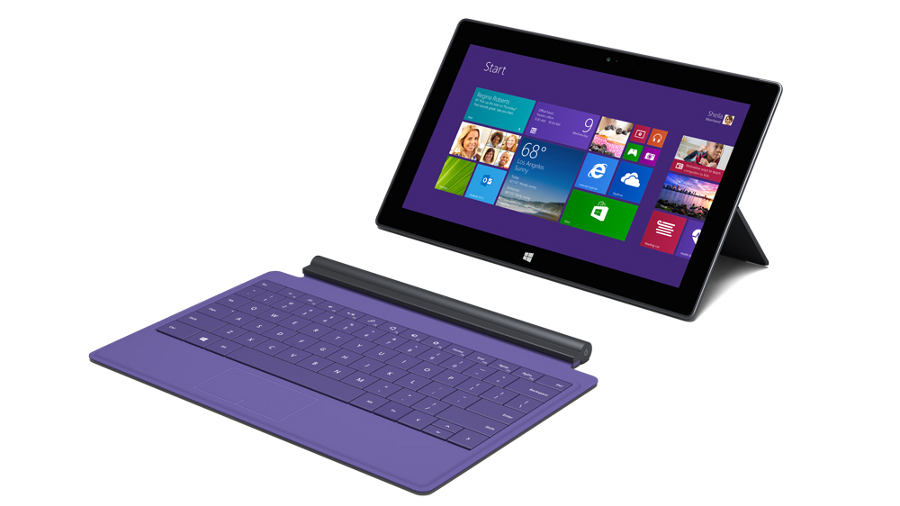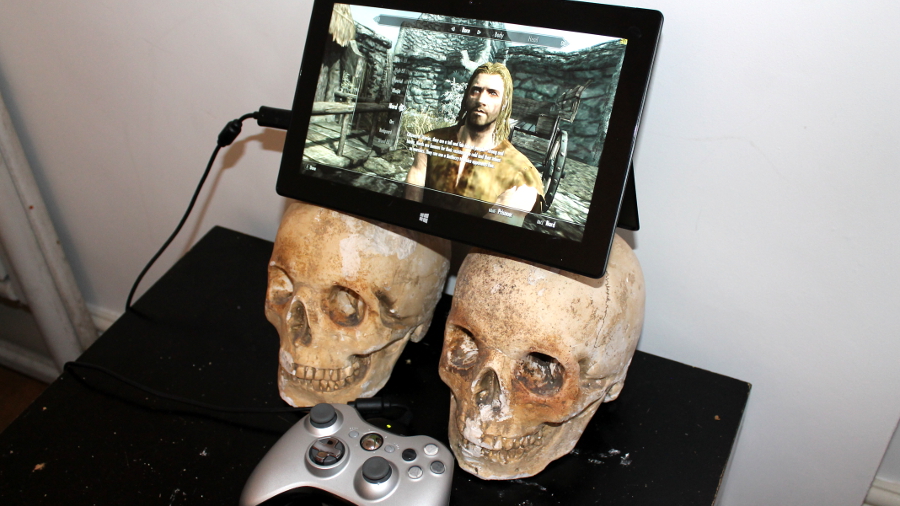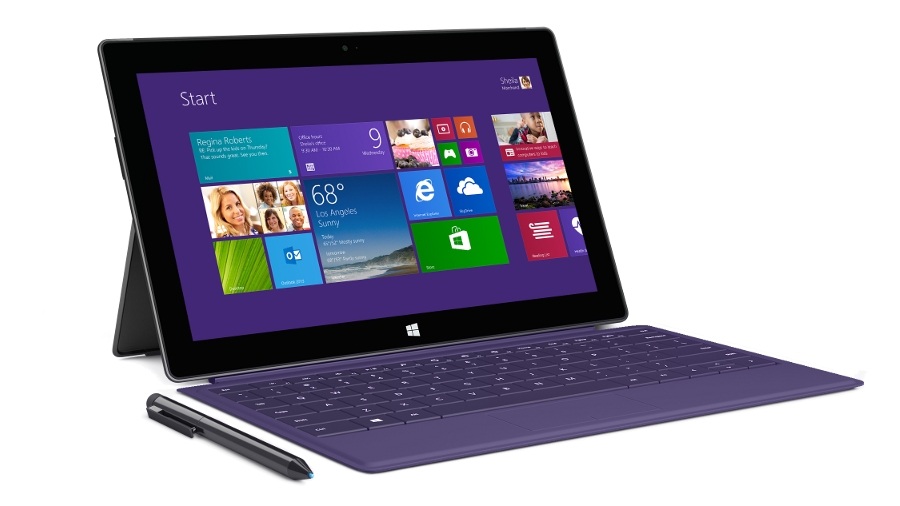Why you can trust TechRadar
Video and audio
We fired up the Surface Pro 2's Xbox app to play some video trailers in 1080p while the device was hooked up to a 42-inch full-HD Toshiba TV, and playback was buttery smooth.
Videos looked great on the Surface Pro 2's screen, and we failed to detect any input lag between the tablet and the TV when swiping and prodding our way through the app's menus. Playing YouTube videos set to 1080p was a similarly hassle-free and enjoyable experience.
The Surface Pro 2's audio capabilities could best be described as adequate. You won't be using it to blast out party anthems at a house party, but it's more than up to the task for casual listening sessions or watching video content.
Unfortunately, the Surface Pro 2's front and rear facing 0.9-megapixel cameras are something of a disappointment. Microsoft has made sure that its 720p snappers are just about up to the task of holding video calls on Skype (Microsoft is throwing one years' worth of unlimited International calls with the device), but they're fairly useless at taking stills, which we'll cover in more detail shortly.

Apps and games
The Surface Pro 2 is never going to compete with the Razer Edge-type devices of this world thanks to housing an integrated Intel HD Graphics 4400 chip, but it improves upon the Surface Pro's HD4000 by supporting DirectX 11.1, OpenCL 1.2 and OpenGL 4.0, turning the Surface Pro 2 into a novel option for on-the-move gamers with realistic expectations.
Our Surface Pro 2 was configured with 4GB of main memory, though the availability of an 8GB version means that it would be worth stumping up extra for the added performance in games. If you are thinking of picking one up for gaming, be warned. Windows 8.1 is something of a bloater and only leaves 26GB of free space remaining on the 64GB Surface Pro 2 before you've done anything with it.
Unlike the Surface 2, the Surface Pro 2 isn't designed to be a device that relies on cloud services (compared to, say, the Surface 2), so you might want to consider loading movies and other large files onto micro SDXC cards. Installing a few Steam games on that hard drive would see space gobbled up in a snap.
Benchmarks
We fired up 2007 game Team Fortress 2 to warm the Surface Pro 2 up. Powered by Valve's Source engine, it's a rough indicator of how the device will handle other games - such as Left4Dead2 and Portal2 - will fare.
To test the game, we ran a one-minute benchmark with it set to the Surface Pro 2's native 1,920 x 1,080 resolution. We tuned all video settings to the highest option except for Filtering (which was set to Bilinear) and Antialiasing (which was disabled), and Vsync was left on.
The Surface Pro 2 hummed along without a hitch at a smooth 60FPS, resulting in a playable experience that looked great and allowed us to sniper our way around the map with confidence. As expected, upping Antialiasing to 8x MSAA and Filtering to Anisotropic 8x caused framerates to drop dramatically to an average of 22FPS, rendering it practically unplayable.

Next up was Skyrim, which initially refused to load until we deleted the game's local content from within Steam before reinstalling it - something of a hiccup in Windows 8.1 according to Steam's forums. As with any new OS, it's a good idea to keep all graphics drivers and Steam games updated to avoid compatibility issues.
Running at native resolution with all of the settings tuned to low, we managed to crank an average frame rate of 26.3 FPS out of the Surface 2 Pro. Keeping the settings the same but dropping the resolution to 1,280 x 720 pixels resulted in a much more playable average of 37 FPS, and image quality was still more than bearable, if a little blurrier.
Better yet, hooking up an Xbox 360 gamepad gave us a portable console-like experience. Slaying dragons on PCs has been a pastime throughout the years, but not many can say they've done it using a tablet while sat on the train.

